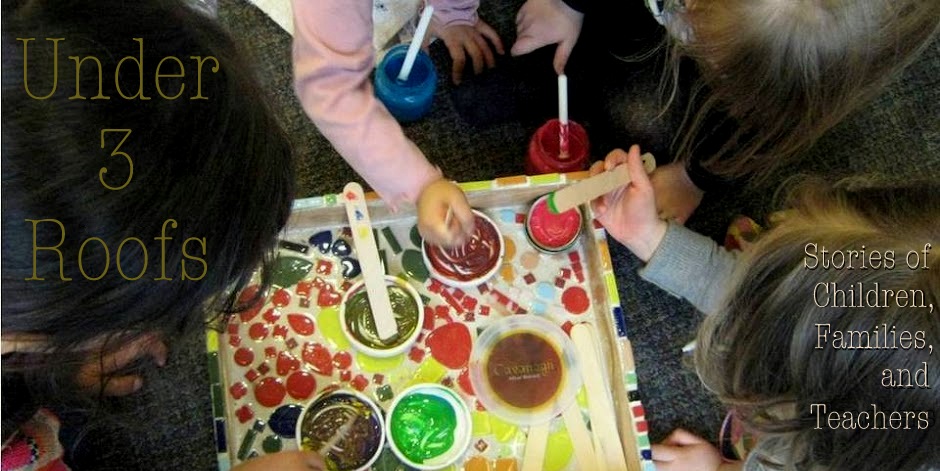How should I act when I join my infant in
the Studio?
How can I be a part of their
exploration without disrupting their investigation?
Here is our Center’s
culture around
talking
about children’s work and taking part in the activity
in a child-centered
way.
Talking about children’s work
Each and
every material offers an infant so many new sensations to explore! Sometimes
this can feel overwhelming – perhaps the newness is unsettling or maybe the
material’s texture is unexpected and startling. Our best tool for understanding
what they think about the medium in front of them is observation. Take a moment
to watch the way your child is using the material. Is he interested in the
feeling of it? The sound it makes? The different ways he can manipulate it?
After your child has had time to work on their own, offer some observations
about what you notice, and suggest some possibilities for furthering their
interest.
“You really like to shake these materials with big
movements!”
“I notice you really like to bring the paper to your mouth.
Would you like to try this thick, heavy paper so you can mouth it longer?”
“That was so surprising to me when that happened! What do you
think about that?”
Joining in the activity
Art
materials can be so enticing, you just want to play with them, too! The trick is, how can you
join in alongside your child without the focus shifting to what you are doing rather than what they are doing? Babies need time and space to test out these
materials for themselves, so sit back and allow them to get comfortable before
offering anything new.
Take a
moment to look at the children’s work. How
is your child using the material? Is he feeling it with his hands? With his
feet? Try interacting with it in the same way that he is.
After
your child has had time to interact with the materials as they are, enact some
simple changes on one of the things at hand. Crumple
a piece of paper up, or twist it like a rope. What will your child make of this
transformation?
If you
notice some other materials that you think your child might enjoy, move them
closer. Does your child reach for them? Do they
hold his interest? Is he more interested in what he already has?
Similar posts are available for parents of toddlers and preschoolers.
Similar posts are available for parents of toddlers and preschoolers.



